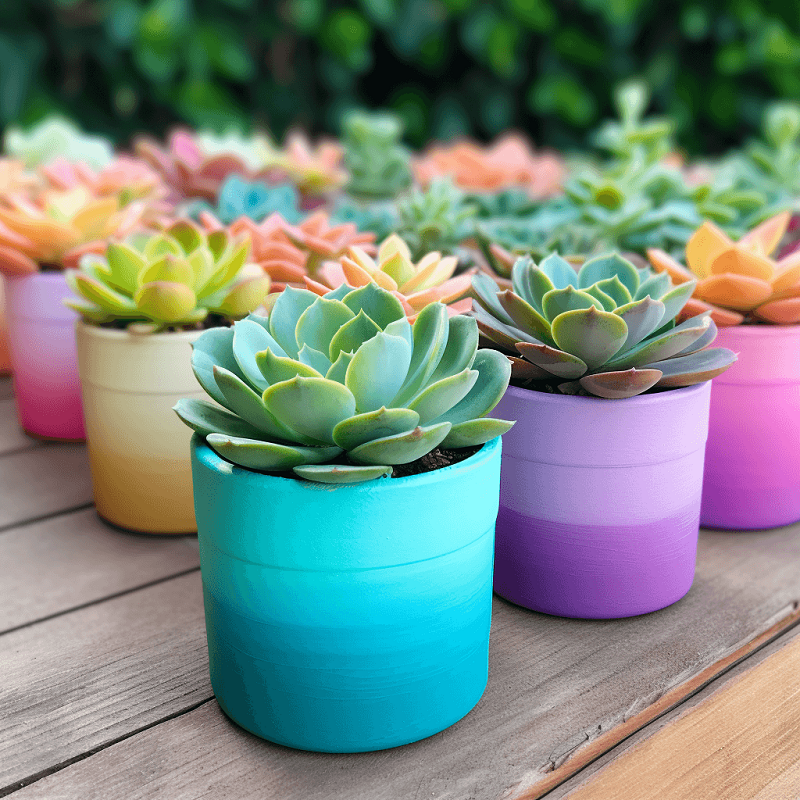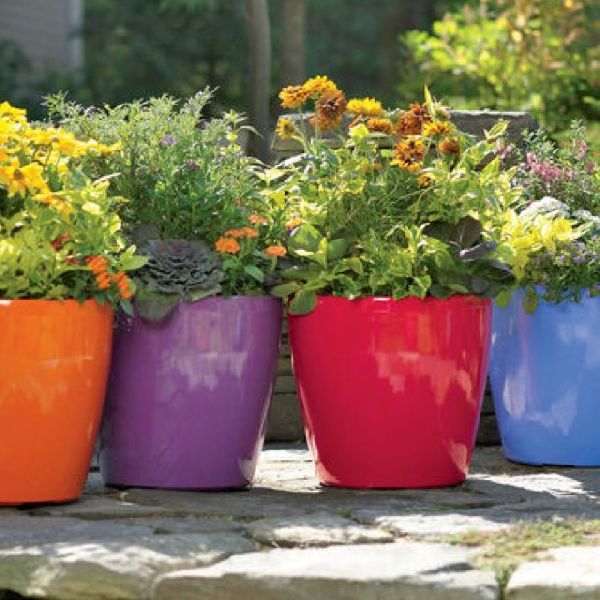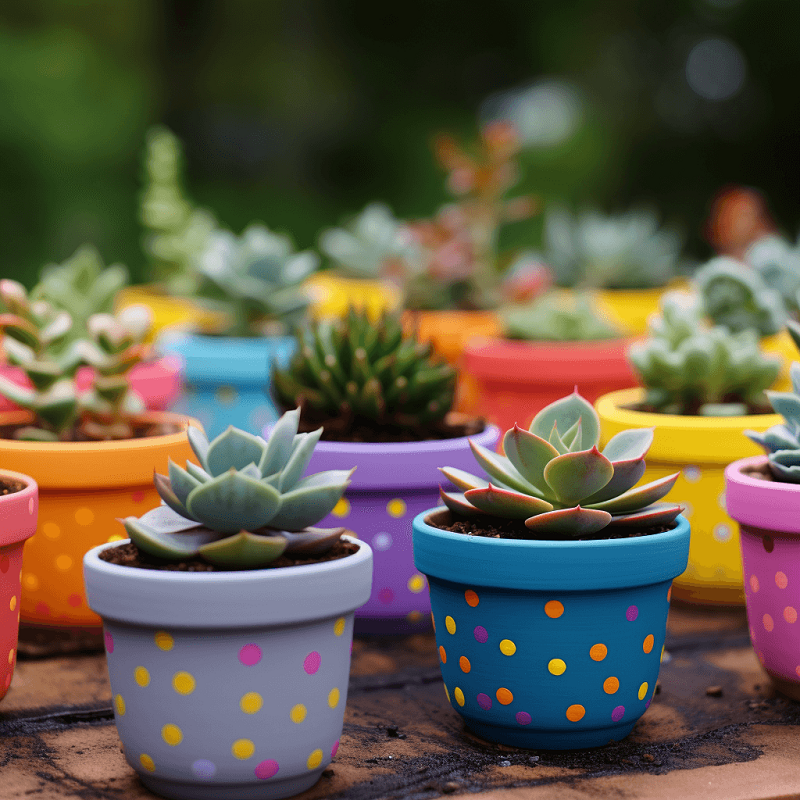Enhancing your garden with vibrant and well-coordinated flower pots can make a significant difference in the overall aesthetics of your outdoor space. The right color combinations can create a harmonious and visually appealing environment, drawing attention to your plants and complementing the surrounding landscape. In this comprehensive guide, we will explore various color combinations that work well in flower pots to enhance your garden’s beauty.
Understanding Color Theory in Gardening
The Basics of Color Theory
Color theory is an essential aspect of designing any visual space, including your garden. It involves understanding how colors interact with each other and how they can be combined to create a pleasing effect. In gardening, color theory helps you choose plant and pot colors that complement each other and enhance the overall look of your garden.
Complementary Colors for Pots
Complementary colors are those that are opposite each other on the color wheel, such as blue and orange or red and green. When used in flower pots, complementary colors can create a vibrant and eye-catching contrast. For instance, a deep blue pot with bright orange marigolds can make both the pot and the flowers stand out. This combination is ideal for creating focal points in your garden.
Analogous Colors for a Harmonious Look
Analogous colors are those that are next to each other on the color wheel, such as blue, blue-green, and green. Using analogous colors in your flower pots can create a harmonious and soothing effect. For example, a pot in a soft green shade filled with blue and white flowers can offer a serene and cohesive look that blends well with natural surroundings.

Classic Color Combinations for Flower Pots
Monochromatic Schemes
A monochromatic color scheme involves using variations of a single color. This approach can be incredibly elegant and understated. For instance, choosing flower pots in various shades of blue, from navy to sky blue, and filling them with different blue-hued flowers can create a sophisticated and serene garden space. Monochromatic schemes are particularly effective in modern and minimalist garden designs.
Contrasting Colors for Impact
Contrasting colors, such as purple and yellow or red and green, can create a dramatic and lively effect. These combinations are perfect for adding vibrancy and energy to your garden. A bright red pot with yellow marigolds or a purple pot with contrasting white flowers can make a bold statement and draw attention to your garden’s focal points.
Pastel Combinations for a Soft Look
Pastel colors are soft, muted shades that can create a gentle and calming atmosphere in your garden. Combining pastel-colored pots with delicate flowers, such as pale pink begonias or lavender, can offer a soft and romantic look. This combination is ideal for creating a tranquil garden space that feels inviting and relaxing.

Seasonal Color Schemes
Spring Colors: Fresh and Vibrant
Spring is the season of renewal and fresh starts, and your flower pots can reflect this with vibrant and cheerful colors. Bright yellows, lively greens, and bold pinks are perfect for spring. A sunny yellow pot with a mix of pink and white petunias can instantly brighten up your garden and welcome the new season with energy and optimism.
Summer Colors: Bold and Hot
Summer is the time for bold, hot colors that capture the essence of warmth and sunshine. Reds, oranges, and deep blues are great choices for summer flower pots. For a striking effect, consider a bright orange pot with deep red geraniums or a vivid blue pot with fiery red calibrachoas. These combinations can create a lively and dynamic summer garden.
Autumn Colors: Warm and Cozy
Autumn brings with it a palette of warm, earthy tones. Think rich oranges, deep reds, and golden yellows. Flower pots in these colors can complement the changing foliage and create a cozy fall atmosphere. A pot in a warm terracotta shade filled with golden mums or red pansies can enhance the autumnal feel of your garden.
Winter Colors: Cool and Crisp
Winter color schemes tend to focus on cool, crisp colors that reflect the season’s tranquility. Whites, silvers, and deep blues can create a serene and elegant winter garden. A white pot with blue and silver ornaments or a cool grey pot with white cyclamens can add a touch of winter magic to your garden space.
Textures and Patterns in Flower Pots
The Impact of Texture on Color
Texture can significantly influence how colors are perceived in flower pots. Glossy finishes can make colors appear more vibrant, while matte finishes offer a more subdued look. Textured pots, such as those with intricate patterns or rustic finishes, can add depth and interest to your color combinations. For instance, a glossy red pot with vibrant yellow flowers can create a bold contrast, while a matte blue pot with soft white blooms offers a more subtle effect.
Patterns and Decorative Elements
Incorporating patterns and decorative elements into your flower pots can enhance their visual appeal. Patterns such as stripes, polka dots, or geometric designs can add an extra layer of interest to your color combinations. For example, a pot with a striped pattern in contrasting colors, like navy and white, can complement a garden filled with similarly themed plants.
Coordinating Pots with Garden Themes
Matching Pots to Garden Styles
Coordinating your flower pots with your overall garden style can create a cohesive and aesthetically pleasing look. For example, if you have a rustic garden with natural materials, opt for pots in earthy tones and textured finishes. On the other hand, a contemporary garden may benefit from sleek, modern pots in bold colors and clean lines.
Integrating Pots into Garden Design
Consider how your flower pots fit into the broader garden design. If you have a themed garden, such as a Mediterranean or tropical garden, choose pots that complement the theme. For a Mediterranean garden, use terracotta pots with warm, earthy colors, while a tropical garden may benefit from brightly colored or patterned pots that reflect the vibrant flora.
Practical Tips for Choosing Flower Pot Colors
Considering Plant Colors
When selecting colors for your flower pots, it’s essential to consider the colors of the plants you will be using. Choose pot colors that complement or contrast with the plant colors to enhance their appearance. For instance, a dark-colored pot can make bright flowers pop, while a light-colored pot can provide a subtle backdrop for more delicate blooms.
Matching Pots to Garden Surroundings
Take into account the colors of your garden’s surroundings, such as your home exterior, patio furniture, or garden pathways. Choosing flower pots that coordinate with these elements can create a harmonious and well-integrated look. For example, if your home has a neutral exterior, you might choose bold-colored pots to add a splash of color to your garden.

Maintenance and Longevity of Flower Pots
Choosing Durable Materials
When selecting flower pots, it’s important to choose materials that can withstand the elements and last for years. Materials such as ceramic, concrete, and resin offer durability and can be found in various colors and finishes. Investing in high-quality pots ensures that your color combinations remain vibrant and your garden continues to look beautiful over time.
Caring for Colored Pots
To maintain the appearance of your colored flower pots, regular cleaning and maintenance are essential. Avoid using harsh chemicals that can damage the finish. Instead, gently clean pots with a mild detergent and water. For outdoor pots, consider applying a protective sealant to help preserve the color and finish.
Conclusion
The right color combinations for flower pots can dramatically enhance the beauty of your garden, creating a space that is visually appealing and inviting. By understanding color theory, choosing classic combinations, and considering seasonal and practical aspects, you can design a garden that reflects your personal style and complements your outdoor environment. Whether you prefer bold contrasts or soft pastels, the key is to create a harmonious and cohesive look that brings your garden to life.
